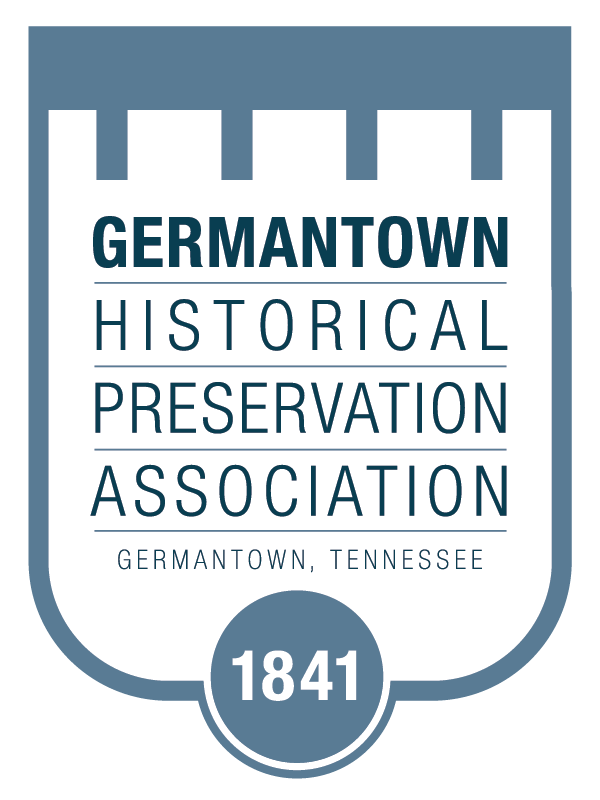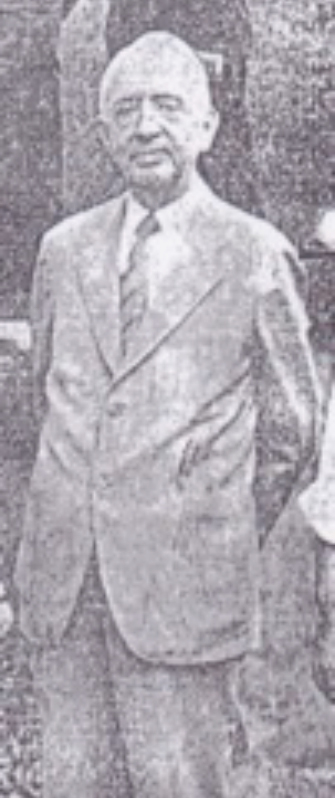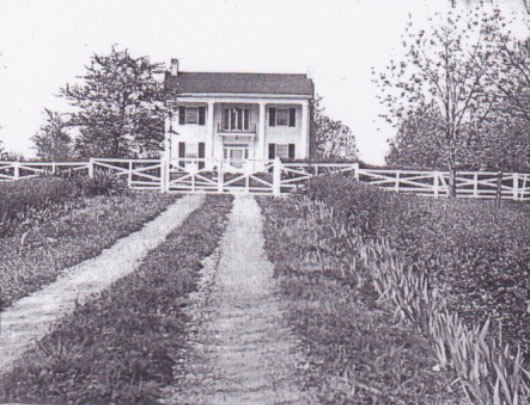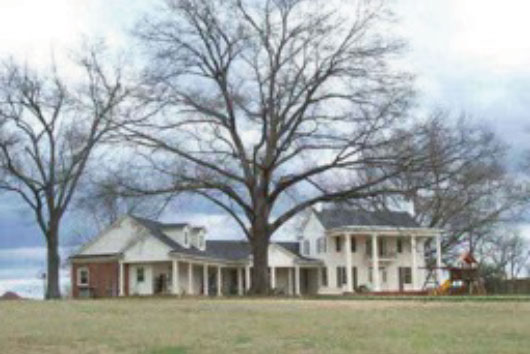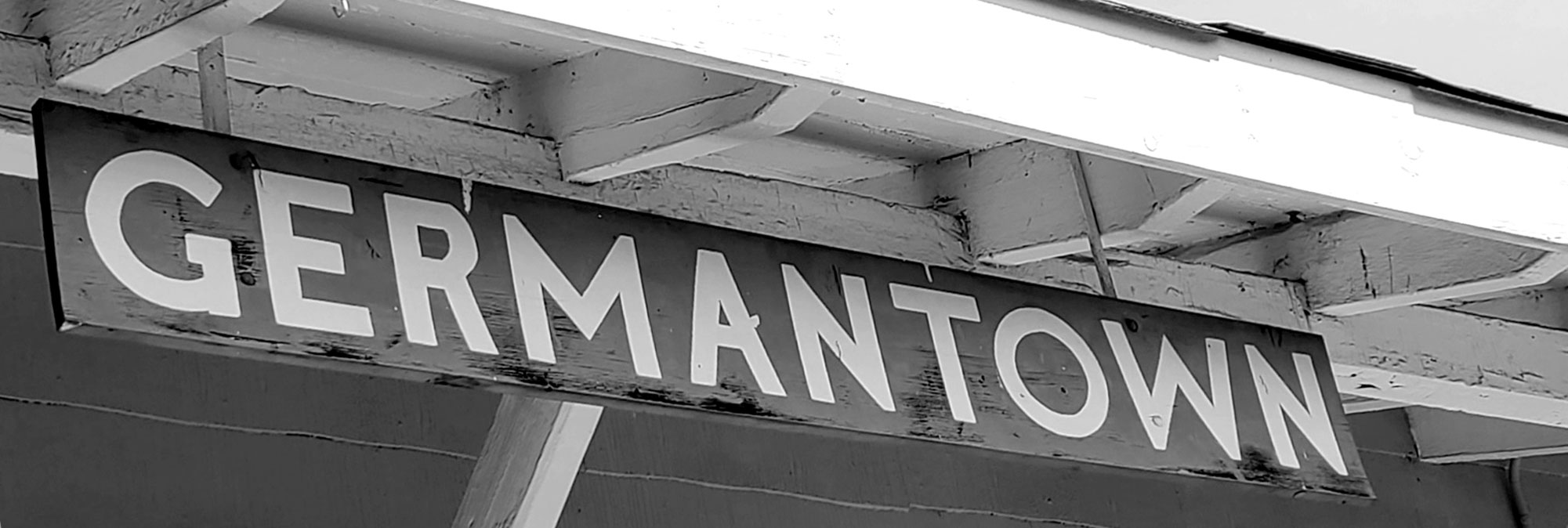
Duntreath Farms & Dr. J.A. Crisler
By Andrew Pouncey
During the early 1900s, Dr. J.A. Crisler purchased a farm, a manor house, and a 1600-acre tract known as Duntreath Farms, along with the eastern limits of Germantown. He turned the plantation into one of the first certified dairy farms in the area.
Dr. Crisler served his country in WWII, beginning in 1942. Overseas for 3 years, he served in the dual capacity of Surgical Consultant for the First Army and Commanding Officer of the Third Auxiliary Surgical Group.
Dr. Crisler was a famed surgeon and one of the founders and Chief Surgeon of the early Crisler Clinic of Memphis. A leader in the Mid-South medical profession for more than half a century, he gained fame as a surgeon by use of iodine in the treatment of peritonitis, a theory which he perfected and advocated throughout his professional life.
The name Duntreath Manor and Duntreath Farms was given to the property by Dr. Crisler and his family. According to Betty Buchignani of Memphis, granddaughter of Dr. J.A. Crisler Sr., and the daughter of Dr. J.A. Crisler, Jr., “this name came from Duntreath Castle, an early medieval castle in central Scotland.”
Duntreath Farms stretched from just north of Poplar to Dogwood Road where Houston High School is located today. The western boundary was Johnson Road. The farm was usually referred to in two parts, the upper end, and the lower end. The upper end was the south end near Poplar where the manor house was located. The lower end was the north end located near Dogwood Road where the main dairy was located.
The Upper End
Dr. Crisler and his family used Duntreath Manor as their country home until the early 1930s when it became their principal residence. Their primary residence had been in Chickasaw Gardens in Memphis. Lightning struck the original manor house, destroyed by fire in July 1939. Dr. Crisler had the manor house rebuilt on the original foundation and moved into the new manor house a year later. The stately, white, Southern colonial-style home, with its magnificent four columns in front, still stands today amid huge oak trees a half mile east of Johnson Road, just north of Poplar (due north and abutting Johnson Road Park).
Betty Buchignani related the following memories of Duntreath Manor and Duntreath Farms.
“As children, my two brothers and I spent many happy hours at the farm enjoying long family horseback rides. We each were given a horse. During the time that grandfather was partially paralyzed, movies were shown in the evening on the large front porch beneath the towering columns of Duntreath Manor. A favorite of grandfathers was Bing Crosby.”
While partially paralyzed, grandfather was able to pursue his favorite sport of fox hunting. His chauffeur would drive him into the woods where grandfather’s pack of foxhounds were released, and grandfather would listen and identify the voices of individual hounds as they caught the trail of the quarry,” Buchignani noted. “His favorite hound was a black and tan hound called True Boy. This hound had a mouth like a steamboat whistle, and when he would give mouth life the doctor waxed eloquently regarding Ture Boy’s ability and speed in running a red fox. For the last few years when Dr. Crisler hunted he did so under great difficulty, but the love of the chase was so strong in him that when he would go hunting, he had a nurse and attendant accompany him. He was also very fond of hunting with beagles.”
The Lower End
The lower end of Duntreath Farms was approximately the area of land that lies north of South Spring Hollow Lane, east of Johnson Road, west of the Germantown city limits line, and south of Dogwood Road that passes in front of Houston High School. Life at the lower end of the farm centered around the large dairy that was located there. On the vast acreage surrounding the dairy roamed a herd of between 250 and 300 purebred Jersey cows, providing milk for the dairy.
Housing for the farm workers, crop land, pastureland, truck patches, orchards, silos, and buildings for farm equipment, work stock, and supplies completed the landscape at the lower end. Tom Campbell operated a small store at the corner of Johnson Road and Dogwood Road near the entrance to the dairy farm. It served the farm as well as the surrounding community.
The original dairy barn burned on October 1, 1929, along with five other buildings and several tons of hay. The dairy herd was not hurt during the fire due to the efforts of farm workers and neighbors. The loss was estimated to be $80,000, according to an article in The Commercial Appeal. The dairy barn was rebuilt.
There were rigid specifications for sanitation for the safe handling of certified, unpasteurized milk taken from the herd of Jersey milk cows. No unauthorized person was allowed in the milk house, which was kept as sterile as an operating room. The milk was chilled immediately. All equipment was disinfected, and dairy workers were required to shower and change into sterile uniforms before entering the dairy. The floors were of hexagonal tile.
Milking was all done by hand at this time. Some individuals felt that Dunteath Farms probably delivered milk to individual homes in the surrounding communities such as Forest Hill during its early years. Later the milk was sold to dairy companies that processed the milk for their customers. Forest Hill Dairy, which is and was at the time located on Madison Street in midtown Memphis, was one of the largest buyers of the milk produced on Duntreath Farms. In an early letter and brochure sent to customers in the late 1920s and early 1930s, Forest Hill Dairy advertised Duntreath Farms as one of America’s finest dairy farms and producer of much of their milk.
There also was a goat herd on Duntreath Farms. The goats were milked, and their milk was sold to Forest Hill Dairy. Mary Rape of Germantown could remember children from the Forest Hill community walking to Duntreath Farms to see the goats being milked. Vegetables were also grown on the farm to feed the cattle as well as the farm employees.
After the death of Dr. (at 74) and Mrs. J. A. Crisler, Sr., their daughter, Josephine Crisler McCormack, and her family took the upper half of the farm including the Manor, and their son, Dr. J.A. Crisler, Jr., took the lower half which included the dairy.
Dr. Crisler’s heirs sold Duntreath Manor and 370 acres of the farm to Captain William Keasler and Mrs. Keasler. Captain Keasler at that time was a pilot for American Airlines. Captain Keasler and his family moved into Duntreath Manor in 1949.
Keasler described the property he bought, in the following way. “It had five tenant houses, a 14- stall mule barn, a dairy, and the manor house on it. Most of the acreage was farmland.”
Keasler eventually tore all the buildings down except the manor house and did improvements to the property. According to Keasler, he built a 3-acre lake north of the manor house and stocked it with fish. Today the lake is part of Johnson Road Park. Keasler established a successful cattle farm and feed lot business on the property. He also used the acreage to raise beans, cotton, and corn.
Keasler eventually sold all the property to development companies and spacious homes on 2-acre sites cover most of the original Duntreath Farms. The only reminder and visible remains of Duntreath Farms are the manor house and the stately old trees along the driveway and around the house. According to Keasler, his wife re-named Duntreath Manor and the farm Longview Acres because the property lay in a long shape.
Source
Betty Buchignani, granddaughter of Dr. J.A. Crisler, Sr., and daughter of Dr. J.A. Crisler, Jr. of Memphis, TN, personal memoir
Anna Sue Cook, The Commercial Appeal, June 22, 1993
Memphis Press-Scimitar, ‘Duntreath Sold to Air Pilot: 370 Acres’, April 21, 1949
Photo of House: www.redfin.com
Photo of Subdivision: Entry Sign: Andrew Pouncey
